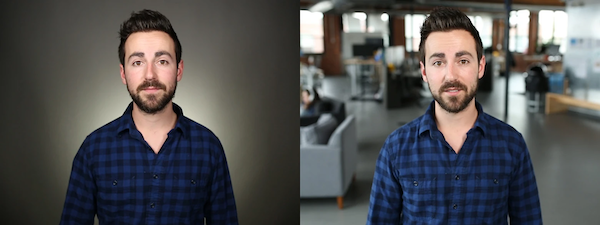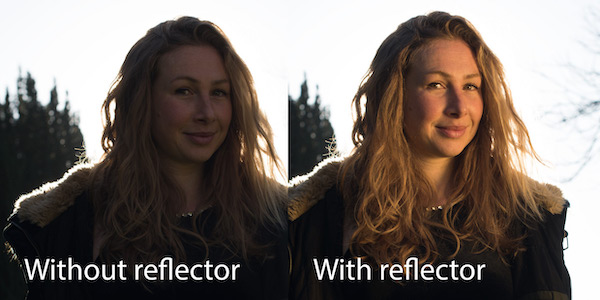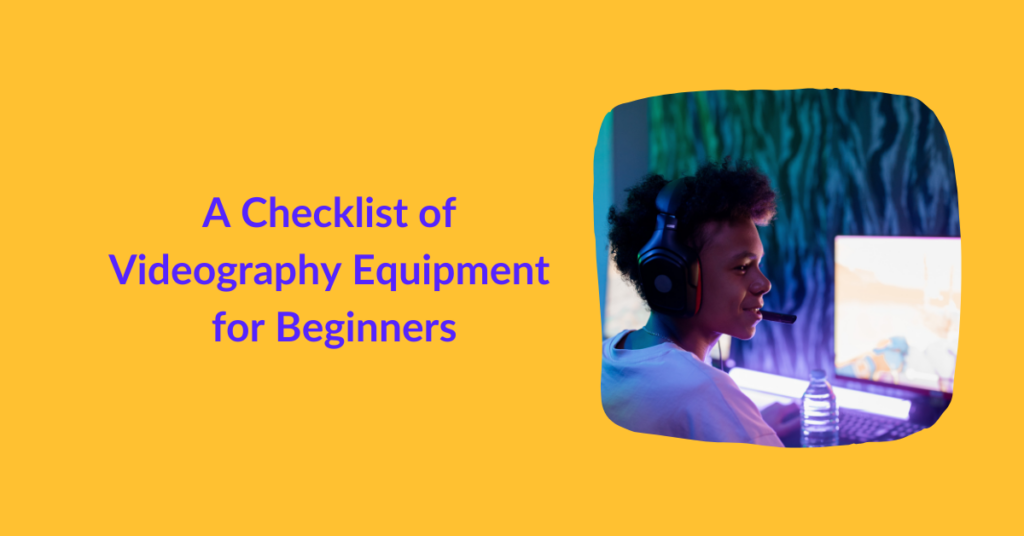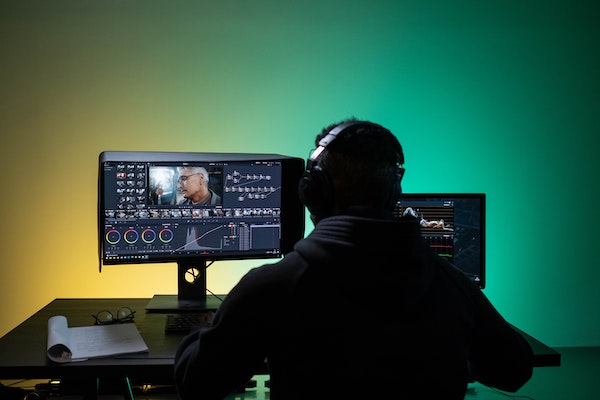Choosing the right video equipment is the key to successful videography. Whether you’re creating content for your YouTube channel, your business website, or your social accounts, it’s necessary to have the basic videography equipment at least.
Note that we’re talking about professional video production. We assume you’re an aspiring filmmaker or video producer, eager to put your vision out there and enlighten souls. Perhaps, make a buck or two as well.
In case you’re only aiming to run a social media page, you might want to save money and invest in a good iPhone instead. Check out this guide about how to shoot awesome videos on iPhone.
Hoping we’re on the same page, let’s dive into our checklist of videography equipment for beginners.
Table of Contents
7 Basic Videography Equipment Checklist
Videography equipment basically refers to the gadgets you’ll be using to record, enhance, store, and run your equipment. Since this is a checklist for beginners, we’ll only be covering the gadgets required to record, enhance, and store your videos.
Video Camera
Video cameras are not only limited to DSLRs, as many people assume. There’s a wide range of video cameras out there. Each of them specializes in a specific shooting style, and each of these is suitable for a certain expertise level.
The most recognized types of video cameras are:
Consumer Video Cameras/Camcorders
A consumer video camera or camcorder is the cheapest video recording camera. It’s the basic video capturing device out there in the market. It’s limited in terms of functionality compared to other options in this list. But it’s affordable, convenient, and portable.
You can conveniently get a good quality camcorder at $500 from any of the big names, including Canon, Sony, Panasonic, and Toshiba. As for the image quality, most camcorders offer any of these two resolutions:
- 720 x 1280 at 30 fps or 24 fps
- 1080 x 1980 at 30 fps or 24 fps
These are only as good as a camera phone’s results. Some of the recently released camcorders allow users to change lenses, but most camcorders don’t. The recording formats supported by camcorders are MPEG-2, MPEG-4, and AVCHD.
A camcorder is advisable for you if you’re completely new to the world of cameras. That’s because you do not need to learn a lot of controls to handle this video recording device. It gives you room to explore your creative potential by lifting off the technical pressure of device handling.
Pro-Consumer Video Cameras
Pro-consumer video cameras lie between consumer cameras and professional-grade cameras. These cameras perform better than camcorders but not as good as professional mirrorless cameras or DSLRs.
These offer more control in terms of manual adjustments, the lenses are interchangeable, and you can connect external camera accessories and supporting devices such as a microphone.
However, these are a bit heavy and expensive. An average prosumer or Pro-Consumer video camera costs anywhere between $1500 and $10000.
Hence, we recommend you buy a Pro-Consumer video camera only if you’re looking forward to excelling your videography career in mass media production, such as in news reporting.
DSLR or Mirrorless video cameras
DSLR or Mirrorless video cameras are the safest universal buy for videographers. Be it, beginners or professionals, it suits all.
These offer big imaging chips that bring about high-quality images. Plus, there’s a wide variety of lenses available for each model of DSLR, so there’s no way you’ll ever find yourself limited or restricted.
Moreover, there’s a lot of flexibility and versatility in shooting mode and capturing capabilities. You can also connect an external mic, light, and other devices for enhanced results.
Additional Lenses
The kit lens works fine for basic photography. For videography, you might need to buy additional lenses.
There’s a variety of lenses out there. Again, each of them serves a specific need. Some of the most common ones are:
- Prime Lens:They come with a fixed focal length. You will have to move forward and backward to zoom in and out.
- Zoom Lens:These come with a variable focal length. You can zoom in and focus on the subject without moving from your place.
- Wide-angle Lens:These are good for capturing landscapes and can be both prime and zoom types of lenses.
- Normal Range Lens:The focal length of these lenses varies from 35 mm – 85 mm. They work best for portraits, videos, and interviews.
Other types of lenses that you may want to try are telezoom lenses, macro lenses, and tilt-shift lenses.
Gimbal
As a beginner, you might find yourself hesitant with camera handling. You might find your hand shaking unreasonably. To take care of this, you’ll need a gimbal, which is a pivoted support about an axis.
In the videography world, it is a stick-like camera accessory that supports your camera on three axes and enables the rotation of the camera along one axis. All you’ve to do is fix your camera on the gimbal and carry it along as you move. Some gimbals are a bit heavy, so you may need to provide support with both your hands. But you can rest assured that the camera won’t fall and the video you record will turn out to be butter smooth!
With the use of gimbals, you won’t have to invest hours in editing your videos and removing shakes and jerks. Instead, you can focus on your video content and make it more interesting with to and fro movement. Hence, these come in handy for YouTube content creators and vloggers.
Tripod
Like the gimbal, a tripod is a three-legged tool to support a camera. Its purpose is stabilization too. But it’s for still recording.
Now, if you’re thinking you don’t need to pack this in your beginner kit and will handle the camera with your hands instead, you ought to know you’re making a mistake! Have a look at this tripod VS handheld video recording.
Apart from stabilizing, the tripod also helps to maintain consistent frames and camera angles. It enables shooting in lowlight and breathes in life to videos by capturing the details of ambiance. So, if used smartly, a tripod could prove to be a great addition to your beginner videography kit!
Microphone
Videos with poor sound quality lose viewers within the first minute. The audio quality of your video is just as important as the visual quality.
For that very reason, we suggest beginner videographers buy a microphone. Using microphones, you can acquire crisp sound for your video, which may require zero to negligible attention from your end in the post-production stage.
You can opt for either a lavalier mic or a wireless mic. Both will work fine for your filmmaking needs and are compatible with the types of video cameras suggested above.
External Hard Drive
Videos occupy a lot of space. When you begin filming for your video, you’ll be taking a lot of shots. And that only multiplies the storage space you’ll be needing. Hence, we recommend buying an external hard drive.
It is an external portable storage device that you can connect with your computer and use to transfer video files. It is slightly expensive but definitely worth it to keep all your data safe and secure.
Camera Bag
Last but not the least, you require a dedicated camera bag to carry all your expensive equipment safely. Plus, camera bags comprise dedicated compartments for each component of your gear. So, it keeps things compact and sorted.
However, since you’ll be spending quite a lot of your money on buying expensive camera gear, we do not recommend you invest too much in this bag. Just buy a basic one, and it’ll be good!
3 Simple Add-Ons to Make Amateur Videos Look Professional
Once you have the kit, you may film fine video content. But even with these, you may not be able to attract the attention you expect. Industry experts might not consider your presence, let alone consider you a competition.
To achieve that, you need to go the extra mile. You need to put in extra effort to make your videos look more professional.
Below, we’ve listed the extra miles we suggest. These can help you hack growth in the filmmaking industry.
Video Editor
As a beginner videographer, you’ll make a lot of mistakes while shooting. And post-production processing of the captured material can be both discouraging and challenging.
You may find yourself settling for poorly edited media files only because you’ve had too much of the video, thinking you’ll improve in the next. Or you might find yourself settling for less because you just don’t know how to improve it any further.
An effective way of dealing with both these situations is to hire a video editor. A professional will not only help you make the most of your video ideas, but they will also fetch you more attention from the viewers and help you up to your videography game.
Solid-colored Backdrop
Professional backdrops are immensely powerful. Check out this picture with and without a backdrop:

Source = Wistia
Although both got shot professionally, the one with the backdrop seems to have a more authoritative feel. We ask you to use this vibe of professional backdrops to your advantage!
Light Reflectors
A light reflector is a simple and handy videography tool that comes at super cheap prices. It reflects the existing light at desired angles to create desired effects. Check out the image below to get an idea of how game-changing a light reflector’s results can be:

Source = HJORTH MED H
Don’t forget to pack your passion!
This checklist of videography equipment for beginners is absolutely incomplete without your passion. So, don’t forget to pack in your enthusiasm and vision whenever beginning to film a video. If it’s too scripted and not resonating within you, it’s not going to bring about ground-breaking results. Keep it authentic and keep it original!




